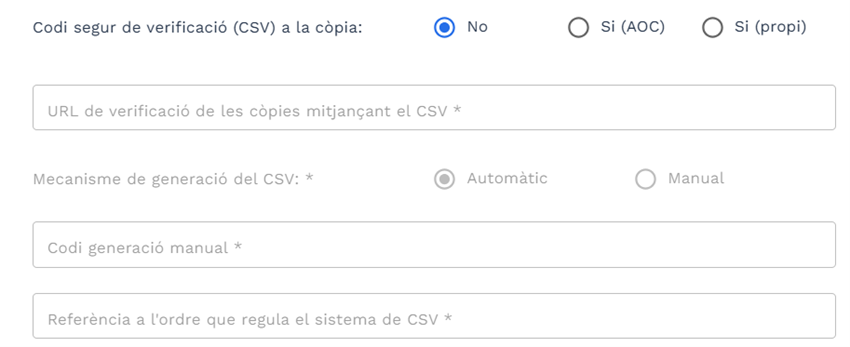As for the functionalities related to signing authentic copies, the service allows you to configure different scenarios for using different electronic signature mechanisms according to the needs of the entity, either by a qualified official or through automated administrative action:
- Electronic signature using secure verification codes (CSV)
- Electronic signature using a digital certificate installed in the local certificate store on the entity user's computer.
- Electronic signature using an electronic seal certificate assigned to the AOC Consortium (option available to entities that are eligible to have the AOC Consortium's Digital Certification Service and that have requested an assigned electronic seal certificate).
In the case of using CSV there are different options:
- The user entity has the AOC Consortium's Electronic Office service and has the Document Verification via CSV item visible: by checking the CSV option of AOC, the service URL and a secure verification code are automatically added to the copy.
- The entity has its own document verification service in its Electronic Office: the copy generator reports the URL of its own service and can decide whether the document code is generated by the Copy automatically, or if it is reported manually. The CSV is generated by the same CÒPIA service.

The definition of the type of signature to be generated is specified in the template or when you want to generate a copy:

In the case of using a digital certificate, the signature generated by the service is a PAdES-LTV type signature.




 Copy link
Copy link